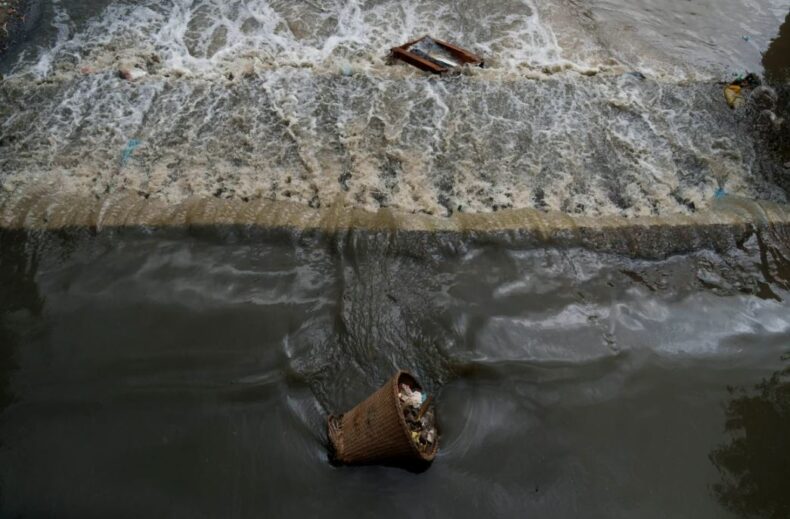Nepal’s holiest river Bagmati has also become the most polluted river in Kathmandu. The river changes color upon entering the capital – from clear to brown and black. In dry weather, a pungent stench floats near the river banks, making it impossible to even stand in the areas nearby.
The contaminants pass through various heritage and religious sites in Kathmandu, hovering in the holy river Bagmati. The sacred river begins at a confluence where three Headwater Rivers come down at Baghdwar Falls. From here, the river flows through a tiger’s jaws in Shivpuri Nagarjun National Park in Nepal.

Additionally, the river Bagmati is 589 km long, originating in Nepal. It flows through the Kathmandu valley to further divide and flow into Bihar. Also, in Nepal’s history, the Bagmati river – also called the Bahumati river in Nepal – is considered the source of civilization and urbanization.
The religious importance of Nepal’s holiest river Bagmati.

In Hindu and Buddhism religions, the Bagmati river is esteemed as sacred. To perform the last rites of the deceased, families use the Bagmati river’s water to wash the feet and face of the dead.
Then, cremation takes place near the river banks of Bagmati. Now, the families use packaged water to cleanse the deceased before cremation.

The Bagmati river flows by one of the most sacred Hindu temples in Kathmandu – the Pashupatinath temple. It is located near the eastern outskirts of Kathmandu and the western bank of Bagmati, dedicated to the Hindu God Shiva. Before Bagmati deteriorated, women took a dip in the river to wash off their sins. Now, considering the toxins and waste in the river, devotees avoid the practice.
In 1979, UNESCO declared the golden-roofed temple a World Heritage.
Environment experts believe Bagmati can’t revive in its previous form.
According to Madhukar Upadhya, an environmentalist and watershed expert, the riverbed no longer has any sand left. Moreover, he believes it is replaced by clay and industrial chemical unloaded directly into the river. “Lots of rituals are connected with Bagmati. It used to be clean around four decades ago and gradually started to deteriorate,” comments Upadhya.

Raw sewage and industrial waste get dumped directly into the river along with heaps of garbage from the population living near the banks. Meanwhile, the government, private bodies and volunteers are working to remove waste in and along the waterways.
The government plans to set up pipes near banks to restrict sewage waste in the river. But, environmentalists believe restoring Bagmati to its previous form is near impossible. The damage is too severe for the river Bagmati to revive.













